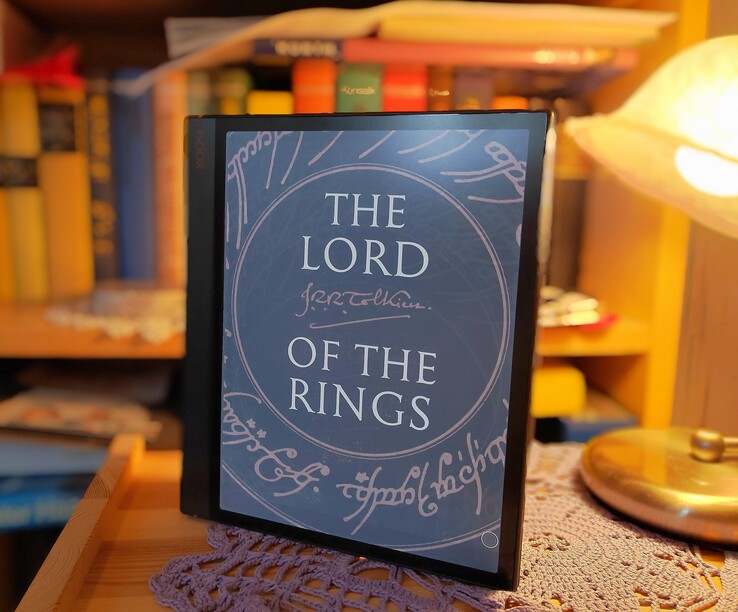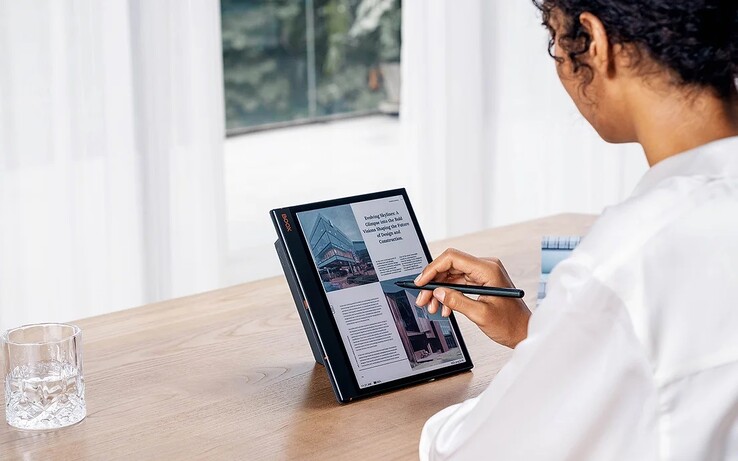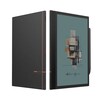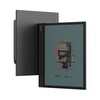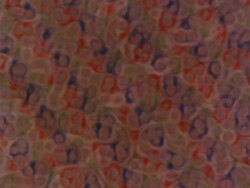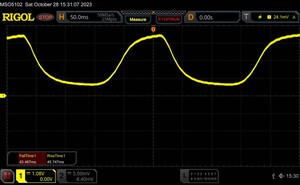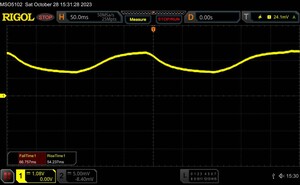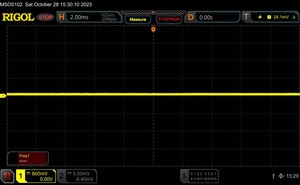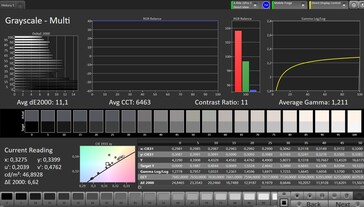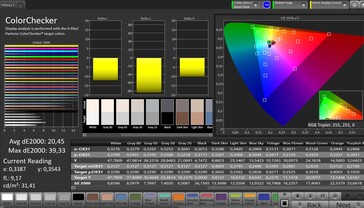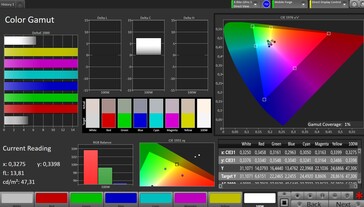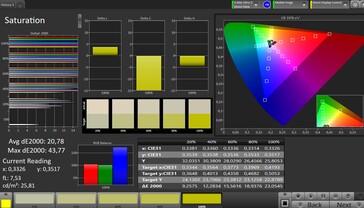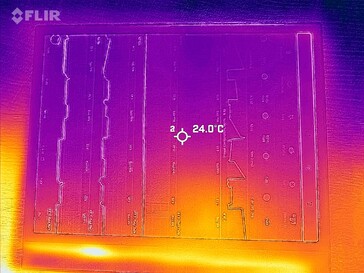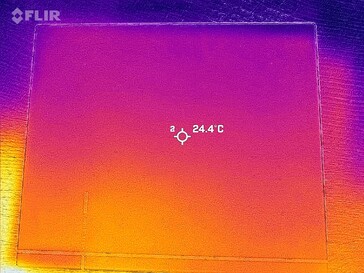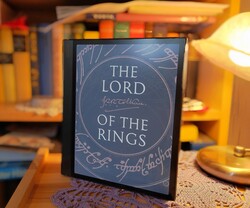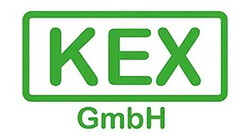Onyx Boox Note Air 3 C review - E-Ink tablet with color display, stylus support and Android
Possible competitors in comparison
Rating | Date | Model | Weight | Drive | Size | Resolution | Price |
|---|---|---|---|---|---|---|---|
| 77.5 % v7 (old) | 11 / 2023 | Onyx Boox Note Air 3 C SD 680, Adreno 610 | 430 g | 64 GB UFS 2.1 Flash | 10.30" | 1240x930 | |
| 75.2 % v7 (old) | 08 / 2023 | Lenovo Smart Paper RK3566, Mali-G52 MP2 | 408 g | 64 GB eMMC Flash | 10.30" | 1872x1404 | |
| 79.4 % v7 (old) | 08 / 2022 | Huawei MatePad Paper Kirin 820e, Mali-G57 MP6 | 360 g | 64 GB UFS 2.2 Flash | 10.30" | 1872x1404 |
Case and features - Decent weight
Onyx Boox packs its e-ink tablet into a slim chassis made of a magnesium-aluminum alloy. In terms of weight, however, at 430 grams it is significantly heavier than the comparable devices. The screen is protected by special Onyx Glass, which is extra-thin and lightly etched to protect the screen, while at the same time enabling a flat front of the housing and reducing reflections.
The wide edge on one side allows the tablet to be held comfortably, and the display edges as a whole are well-dimensioned so that the tablet is easy to use but still looks modern. We like the build quality, only the transition from the display glass to the chassis is a little rough.
With 64 GB UFS 2.1 flash and 4 GB RAM, the Onyx Boox Note Air 3 C is not a memory giant but is adequately equipped compared to other e-ink tablets. A microSD slot can be used to significantly expand the space for e-books and files. The speed of the reader is sufficient in our benchmarks.
The USB-C port only transfers data according to the USB 2.0 standard. NFC for near-field communication is not available. It is also not possible to determine the location via satellites, only an approximate positioning via known WLAN networks.
| SD Card Reader - average JPG Copy Test (av. of 3 runs) | |
| Average of class Tablet (10.2 - 57.4, n=51, last 2 years) | |
| Onyx Boox Note Air 3 C (Angelbird V60) | |
Cross Platform Disk Test (CPDT)
Communication, software and operation - With Android apps and microSD
The tablet cannot connect to the mobile network, but WiFi 5 can be used as the fastest Wi-Fi standard for the Internet connection. The test device thus achieves stable data rates of around 270 - 350 MBit/s and the MatePad Paper with WiFi 6 shows that significantly higher speeds are possible in this price range.
The software is based on Android 12 but has been significantly redesigned and, with its own library and store, is initially designed for reading e-books. Notes can also be created directly here. Things get interesting in the apps section: The Onyx Boox Note Air 3 C comes with a pre-installed Google Play Store, which allows thousands of apps to be installed on the tablet. A music player, picture gallery, and voice recorder are also pre-installed, and the manufacturer also includes a browser.
Onyx provides updates from time to time, but there is no concrete promise about the duration.
The capacitive touchscreen can be used for operation and works precisely. However, the slow response times of the e-ink display require patience from the user from time to time. To protect your own data, you can set a password for the tablet or register a fingerprint via the sensor in the standby button. Once a finger has been registered, it recognizes it very reliably and unlocks the device with only a short delay.
The tablet can also be operated using the stylus supplied, which is particularly useful for handwritten notes. However, smaller buttons can also be operated more reliably than with a finger. Drawing apps from the store can of course also be used.
| Networking | |
| Onyx Boox Note Air 3 C | |
| iperf3 transmit AXE11000 | |
| iperf3 receive AXE11000 | |
| Lenovo Smart Paper | |
| iperf3 transmit AXE11000 | |
| iperf3 receive AXE11000 | |
| Huawei MatePad Paper | |
| iperf3 transmit AXE11000 | |
| iperf3 receive AXE11000 | |
E-reading - Colorful images in e-books too
The tablet has its own library area for stored e-books and supports a variety of formats: In addition to TXT or HTML, it also supports the Kindle formats AZW3, CBR, CBZ, RTF, FB2, DOC, DOCX, PRC, MOBI, CHM and EPUB. Even more exotic formats are also possible via apps from the store.
The pre-installed e-book store contains (at least in Europe) mainly older classics in English, which can be downloaded free of charge; a complete e-book store looks different. Although you can also download apps such as Tolino or Kindle via the Google Play Store or other Android app repositories, you can't buy books directly from the apps either, as Google would fork out a considerable fee for this. Ebooks can therefore usually only be purchased via the providers' websites.
Pull-out buttons on the right-hand side can be used to make direct settings for editing using the stylus: This allows you to highlight text passages, insert annotations, or black out parts. The text size can be changed directly by drawing your fingers together or apart and, if desired, applied to all other documents. Screen brightness and color temperature can be adjusted in the drop-down menu.
The time, battery status, title, and page number are always displayed at the bottom of the screen. Thanks to the good system power, pages are opened quickly, and the color display makes it even easier to enjoy pictures and illustrations in books.
Display - Only partially suitable for movies
The Kaleido 3 e-ink display with 1,240 x 930 pixels, which is installed in the Onyx Boox tablet, is based on a completely different technology to conventional IPS or OLED displays: it supports up to 4,096 colors and 16 shades of grey. Compared to conventional displays, these are very few color nuances, which is due to the fact that the images are built up using colored, white, or black pigments, which are brought into position by different electrical charges.
The advantage: once an image has been built up, it can be maintained without further energy consumption. Because the pigments are physically present, the contrast is very high and you don't necessarily need a backlight to read.
However, the Onyx Boox Note Air 3 C still has an illuminated screen, so you can also browse in the dark. The screen can be as bright as 49 cd/m², other e-ink tablets sometimes offer even more brightness on request. In our test, however, it is still sufficient for all situations, also thanks to the screen's non-reflective surface.
There is no PWM, but the response times are very slow, so it is also apparent that the screen only reacts to inputs with a slight delay. Although Onyx uses a special boost mode for faster display, so that video content is recognizable, it is not really fun due to the few colors and the still low frame rate. Games that require fast reactions are also not a strong point of the e-ink tablet.
| |||||||||||||||||||||||||
Brightness Distribution: 91 %
Center on Battery: 46.5 cd/m²
Contrast: ∞:1 (Black: 0 cd/m²)
ΔE ColorChecker Calman: 20.45 | ∀{0.5-29.43 Ø4.77}
ΔE Greyscale Calman: 11.1 | ∀{0.09-98 Ø5}
1% sRGB (Calman 2D)
Gamma: 1.211
CCT: 6463 K
| Onyx Boox Note Air 3 C E-Ink Kaleido 3, 1240x930, 10.3" | Lenovo Smart Paper E-Ink, 1872x1404, 10.3" | Huawei MatePad Paper E-Ink, 1872x1404, 10.3" | |
|---|---|---|---|
| Response Times | 29% | -3% | |
| Response Time Grey 50% / Grey 80% * (ms) | 121 ? | 134.4 ? -11% | 121 ? -0% |
| Response Time Black / White * (ms) | 89.3 ? | 27.5 ? 69% | 94 ? -5% |
| PWM Frequency (Hz) | |||
| Screen | 68% | 17% | |
| Brightness middle (cd/m²) | 46.5 | 113 143% | 61.9 33% |
| Brightness (cd/m²) | 47 | 106 126% | 60 28% |
| Brightness Distribution (%) | 91 | 83 -9% | 80 -12% |
| Black Level * (cd/m²) | |||
| Colorchecker dE 2000 * | 20.45 | ||
| Colorchecker dE 2000 max. * | 39.33 | ||
| Greyscale dE 2000 * | 11.1 | 9.9 11% | 9.1 18% |
| Gamma | 1.211 182% | 1.371 160% | 2.02 109% |
| CCT | 6463 101% | 7116 91% | 6848 95% |
| Total Average (Program / Settings) | 49% /
55% | 7% /
10% |
* ... smaller is better
Display Response Times
| ↔ Response Time Black to White | ||
|---|---|---|
| 89.3 ms ... rise ↗ and fall ↘ combined | ↗ 43.5 ms rise | |
| ↘ 45.8 ms fall | ||
| The screen shows slow response rates in our tests and will be unsatisfactory for gamers. In comparison, all tested devices range from 0.1 (minimum) to 240 (maximum) ms. » 100 % of all devices are better. This means that the measured response time is worse than the average of all tested devices (20.2 ms). | ||
| ↔ Response Time 50% Grey to 80% Grey | ||
| 121 ms ... rise ↗ and fall ↘ combined | ↗ 66.8 ms rise | |
| ↘ 54.2 ms fall | ||
| The screen shows slow response rates in our tests and will be unsatisfactory for gamers. In comparison, all tested devices range from 0.165 (minimum) to 636 (maximum) ms. » 100 % of all devices are better. This means that the measured response time is worse than the average of all tested devices (31.6 ms). | ||
Screen Flickering / PWM (Pulse-Width Modulation)
| Screen flickering / PWM not detected | |||
In comparison: 53 % of all tested devices do not use PWM to dim the display. If PWM was detected, an average of 8084 (minimum: 5 - maximum: 343500) Hz was measured. | |||
Performance, emissions and battery life - Good power, fast memory
The Snapdragon 680 is already 3 years old but still provides the Onyx Boox Note Air 3 C with enough power to display apps reasonably smoothly, as far as this is possible with the low frame rate of the screen. Turning pages in texts and e-books works comparatively quickly and the vast majority of apps from the store can be started and run without any problems.
Thanks to UFS 2.1 flash, the mass storage of the e-ink tablet is not a bottleneck for performance either: it transfers data quickly and enables reasonably short loading times.
It is pleasing that the tablet hardly heats up under a high load. Even throttling of the SoC is not a problem according to the 3DMark stress tests.
There are two speakers on the left side of the Onyx Boox Note Air 3 C, which can also produce slight stereo effects in landscape mode. They can also play reasonably loud, but sound a little treble-heavy. With the pre-installed audio player, Onyx Boox is clearly aimed at users who like to listen to audiobooks or music. Audio output is also possible via USB-C or Bluetooth. This works with high quality and is easy to set up. Unfortunately, it is not possible to determine which codecs are available for wireless audio transmission, as the tablet does not allow us to look into the developer settings.
At 3,700 mAh, the Note Air 3 C's battery is quite powerful and lasts up to 5 hours under high load. Unfortunately, we are unable to carry out our WLAN test, as this would require a screen brightness of 150 cd/m² for comparability. The tablet lasts for 17:10 hours under very low load, backlight, and WLAN, which is roughly equivalent to reading an e-book, so a rainy day with a good book is not interrupted by a charging process.
The tablet can be fully charged in just under 2:30 hours if it was completely empty beforehand.
| PCMark for Android - Work 3.0 | |
| Average of class Tablet (4622 - 27428, n=77, last 2 years) | |
| Average Qualcomm Snapdragon 680 4G (4535 - 8752, n=16) | |
| Onyx Boox Note Air 3 C | |
| Lenovo Smart Paper | |
| Octane V2 - Total Score | |
| Average of class Tablet (763 - 138481, n=94, last 2 years) | |
| Huawei MatePad Paper | |
| Average Qualcomm Snapdragon 680 4G (6358 - 16498, n=13) | |
| Onyx Boox Note Air 3 C | |
| Lenovo Smart Paper | |
| Onyx Boox Note Air 3 C | Lenovo Smart Paper | Huawei MatePad Paper | Average 64 GB UFS 2.1 Flash | Average of class Tablet | |
|---|---|---|---|---|---|
| AndroBench 3-5 | -80% | 0% | -25% | 134% | |
| Sequential Read 256KB (MB/s) | 690.8 | 163 -76% | 880.1 27% | 696 ? 1% | 1786 ? 159% |
| Sequential Write 256KB (MB/s) | 384.1 | 139 -64% | 256.2 -33% | 224 ? -42% | 1337 ? 248% |
| Random Read 4KB (MB/s) | 157.7 | 25.3 -84% | 145.6 -8% | 137.2 ? -13% | 246 ? 56% |
| Random Write 4KB (MB/s) | 160.5 | 8.8 -95% | 183.1 14% | 84.7 ? -47% | 279 ? 74% |
Temperature
(+) The maximum temperature on the upper side is 27.5 °C / 82 F, compared to the average of 33.6 °C / 92 F, ranging from 20.7 to 53.2 °C for the class Tablet.
(+) The bottom heats up to a maximum of 26.2 °C / 79 F, compared to the average of 33.2 °C / 92 F
(+) In idle usage, the average temperature for the upper side is 23.5 °C / 74 F, compared to the device average of 30 °C / 86 F.
Speaker
Onyx Boox Note Air 3 C audio analysis
(+) | speakers can play relatively loud (82.5 dB)
Bass 100 - 315 Hz
(-) | nearly no bass - on average 34.6% lower than median
(±) | linearity of bass is average (9.8% delta to prev. frequency)
Mids 400 - 2000 Hz
(±) | higher mids - on average 7.6% higher than median
(±) | linearity of mids is average (7.8% delta to prev. frequency)
Highs 2 - 16 kHz
(±) | higher highs - on average 7.8% higher than median
(±) | linearity of highs is average (7.7% delta to prev. frequency)
Overall 100 - 16.000 Hz
(-) | overall sound is not linear (32.8% difference to median)
Compared to same class
» 93% of all tested devices in this class were better, 1% similar, 6% worse
» The best had a delta of 7%, average was 20%, worst was 129%
Compared to all devices tested
» 92% of all tested devices were better, 1% similar, 7% worse
» The best had a delta of 4%, average was 24%, worst was 134%
Huawei MatePad Paper audio analysis
(+) | speakers can play relatively loud (82.1 dB)
Bass 100 - 315 Hz
(±) | reduced bass - on average 12.8% lower than median
(±) | linearity of bass is average (9.4% delta to prev. frequency)
Mids 400 - 2000 Hz
(±) | higher mids - on average 7.2% higher than median
(+) | mids are linear (5.7% delta to prev. frequency)
Highs 2 - 16 kHz
(+) | balanced highs - only 3.8% away from median
(±) | linearity of highs is average (9.2% delta to prev. frequency)
Overall 100 - 16.000 Hz
(±) | linearity of overall sound is average (17.6% difference to median)
Compared to same class
» 44% of all tested devices in this class were better, 5% similar, 51% worse
» The best had a delta of 7%, average was 20%, worst was 129%
Compared to all devices tested
» 34% of all tested devices were better, 8% similar, 58% worse
» The best had a delta of 4%, average was 24%, worst was 134%
Battery life
Pros
Cons
Verdict - Good e-book reader with color display and app support
The Onyx Boox Note Air 3 C offers some special features, first and foremost of course the color display, which makes it easier to experience images and illustrations in e-books, but also offers added value when surfing the Internet and using apps. As the software is based on Android and the Google Play Store is pre-installed, you can easily install your preferred reader software and browse through your library, but the pre-installed reader software also does its job well.
For notes or drawings, there is the supplied stylus, which is reliable to work with. The fingerprint sensor is also a special feature, offering protection for private data. The fact that the memory of the e-ink tablet can be expanded via microSD is also a great feature. Thanks to decent speakers and sound output for headphones via USB-C and Bluetooth, audiobook and music fans will also get their money's worth.
However, the usual limitations of e-ink displays apply despite the accelerated frame rate: For example, videos can hardly be displayed in a respectable way due to the still quite a few colors and the slow response time of the screen. The tablet is also not really suitable for fast games.
The Onyx Boox Note Air 3 C enables fatigue-free reading, handwritten notes and expands its functionality with Android apps.
The Huawei MatePad Paper and the Lenovo Smart Paper are in a similar price range. Huawei has slight limitations due to the lack of Google services, while Lenovo has to make do without speakers.
Price and availability
The Onyx Boox Note Air 3 C is available at the time of testing for just under 550 euros from our rental dealer KEX in the online shop to buy.
It is also available at this price on amazon.de.
Onyx Boox Note Air 3 C
- 11/13/2023 v7 (old)
Florian Schmitt
Transparency
The selection of devices to be reviewed is made by our editorial team. The test sample was provided to the author as a loan by the manufacturer or retailer for the purpose of this review. The lender had no influence on this review, nor did the manufacturer receive a copy of this review before publication. There was no obligation to publish this review. As an independent media company, Notebookcheck is not subjected to the authority of manufacturers, retailers or publishers.
This is how Notebookcheck is testing
Every year, Notebookcheck independently reviews hundreds of laptops and smartphones using standardized procedures to ensure that all results are comparable. We have continuously developed our test methods for around 20 years and set industry standards in the process. In our test labs, high-quality measuring equipment is utilized by experienced technicians and editors. These tests involve a multi-stage validation process. Our complex rating system is based on hundreds of well-founded measurements and benchmarks, which maintains objectivity. Further information on our test methods can be found here.




